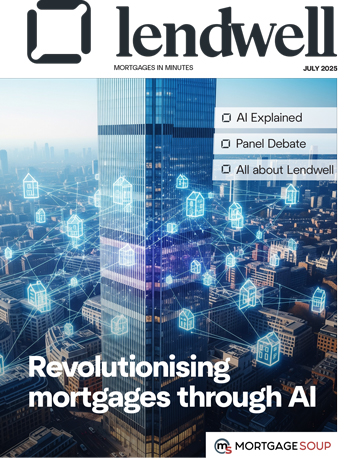Home buyers today can manage their finances, verify their ID and even order a sofa for next-day delivery all from their phones. Yet when it comes to buying a property, they’re faced with a process so outdated and disjointed, it often feels like stepping back in time.
Endless paperwork, repetitive document checks, then weeks of silence followed by a flurry of back-and-forth emails – this is not what digital savvy consumers expect. And it’s certainly not what they deserve.
A whopping 87% of all UK adults own a smartphone with over 55’s the fastest growing adopters in the last decade. In the face of rising regulator and customer expectations, the industry has made pockets of progress.
Many estate agents, lenders, and conveyancers have invested in digital tools to improve operational efficiency or meet regulatory requirements.
But these efforts have often focused on internal gains, not on the experience of the person buying or selling their home.
The result? A mortgage process that might tick the compliance boxes, but still leaves the customer frustrated and confused.
If we want to deliver a truly customer-first and experience-centric mortgage journey, we need to stop thinking of digitisation as a compliance obligation and start treating it as a strategic imperative built around smart, shareable data.
THE DATA DISCONNECT
Part of the problem is every part of the transaction process operates in silo and with its own governance and compliance standards.
Each party, whether it’s the adviser, lender, agent or solicitor, asks for much of the same information but in different formats, systems and timeframes.
Take ID verification as an example. Buyers are often asked to prove their identity multiple times using a mix of physical documents, emails, apps and even certified paper copies. It’s repetitive, slow and completely at odds with how people interact with other products and services.
This fragmented approach doesn’t just create admin headaches, it adds friction and delays, increases the chance of errors, introduces greater potential for risk and fraud and it chips away at trust. It’s no wonder transaction times remain stubbornly high and customer sentiment stubbornly law.
A SMARTER APPROACH
The good news is the industry is already laying the foundations for a smarter, more connected future and data is at the heart of it.
Smart property data is structured, standardised, verified at source and shareable across all stakeholders in a transaction.
Through initiatives like the Property Data Trust Framework, we now have a blueprint for how verified information such as digital ID and material property details can be securely accessed and safely reused across the entire process.
When implemented properly, this means one-time ID verification and material information can be trusted by everyone in the chain.
Property data that’s available upfront and clearly linked to its official source. And a faster, more predictable experience for the customer and every industry professional who no longer have to act as the liaison, chasing updates or duplicating effort.
PUTTING THE CUSTOMER IN CONTROL
The recently enacted Data (Use and Access) Act further strengthens this approach by giving consumers the legal right to access their personal, financial and property data and to share it digitally with trusted providers.
For the first time, consumers will hold some of the power in driving efficiency and transparency in a transaction.
This isn’t just a tech upgrade, it’s a cultural shift. It signals a move away from gatekeeping information and toward empowering consumers to share verified data quickly and securely, whenever and with whomever they choose.
And it will be transformational for those in the industry who are ready to digitise, accept, and use that data responsibly.
COMMERCIAL OPPORTUNITY
Yes, smart property data supports regulatory priorities but the benefits go far beyond compliance. A streamlined digital journey reduces fall-throughs, shortens transaction times, and frees up time for advisers, lenders and conveyancers to focus on value-added service, not admin. That’s not just better for the customer; it’s better for everyone.
Ultimately, a truly digital, data-driven property transaction process is not just desirable, it’s inevitable.
But it won’t be delivered by default. It requires collaboration, shared standards and a genuine commitment to building for the customer, not just for compliance or regulation.
With legislation and government strategy underpinning the future of smart property data, we are transforming homebuying from a fragmented, analogue experience into a seamless, empowering one.
And that’s something every part of the mortgage industry can get behind.





